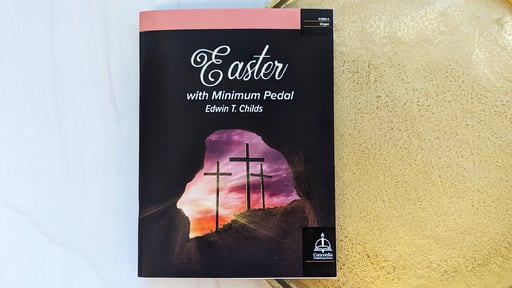To celebrate the release of Lutheran Service Book: Companion to the Hymns, here is an excerpt from Carl Schalk’s essay in Volume 2:
As God’s people, gathered around Word and Sacrament, we sing. But the song is not primarily our song, but the Church’s song. Of course we sing, but in worship we sing as a community of faith, joining together with angels, archangels, and all the company of heaven. It is a song sung by all the faithful who have gone before us, and a song that will continue after we are gone. It is a song that, in our own time and place, we are privileged to join. It is a song in which proclamation, teaching, and praise interweave in a tapestry of music unique to the Church. At the heart and center of that song is the proclamation of the Gospel of Jesus Christ.
The Song of the Old Testament
The song of the Old Testament provides the pattern. In the Old Testament, God identifies Himself through His actions on behalf of His chosen people: God is the God who acts to save us. The very first song recorded in the Old Testament, the Song of Miriam, celebrated God’s saving act in rescuing the children of Israel from the armies of Pharaoh: “Sing to the LORD, for He has triumphed gloriously; the horse and his rider He has thrown into the sea” (Exodus 15:21). Miriam and the women gave voice to their thanks and praise by singing from their hearts of how God had acted in bringing them out of Egypt and freeing them from slavery. For ancient Israel, the deeds of the Lord revealed God as the God who saves, who was “majestic in holiness, awesome in glorious deeds, doing wonders” (Exodus 15:11).
Israel’s song of praise and thanks to God consisted of rehearsing what God had done to rescue them. What drove their praise and thanksgiving was the story of God’s mighty acts on their behalf. To sing God’s praise meant, for ancient Israel, to tell again and again in song the story of how God had acted to save them—how God had brought them up out of Egypt, led them through the wilderness, and brought them to the Promised Land. That was their song.
The constant refrain of the Psalms, the “hymnbook” of the Old Testament, is Israel’s response of praise described by such phrases as declaring God’s “mighty acts” (Psalm 145:4), making known God’s “deeds” (Psalm 105:1), calling to remembrance God’s “wondrous works” (Psalm 105:5), and recounting God’s “wondrous deeds” (Psalm 75:1). To sing and praise God in the Old Testament was to “sing and praise the God who … ,” the mark of omission being filled with a particular story of God delivering His people.
The Song of the New Testament
The song of the New Testament maintained the pattern of the Old Testament by continuing to rehearse and celebrate the mighty acts of God. But it added to the Old Testament song the Good News celebrating God’s faithfulness to His gracious promise to send the Savior in the person of His Son, Jesus Christ, the ultimate revelation of God’s goodness. The New Testament celebrates the Good News that at a particular time and in a particular place God sent His Son to be born of the Virgin, to fulfill the Law for us, to suffer death on a cross; He was raised from the dead by the glory of the Father, ascended to heaven, and now sits at the right hand of God, and He will come again at the end of time, in fulfillment of His promise, to judge the world.
This Good News was the heart and center of such psalm-like New Testament songs as young Mary’s Magnificat, Zechariah’s Benedictus, and the Nunc Dimittis from the heart of the aged Simeon. Each testifies to God’s new act of deliverance in His Son, Jesus Christ.
This story about Jesus the Christ and the hope He brings for the future is what Christians call the Gospel, the Good News, the kerygma (“message” or “proclamation”). It is not a set of moral or ethical standards, not the “Golden Rule,” not a set of rules for a successful life, nor a religious philosophy. It is not just any kind of good news that may be healing, positive, helpful, or that seems good to me. It is a specific story that is both history and promise. It became the basic content of the songs of the New Testament and the early Church. It became the essential content of the Church’s liturgy and song in succeeding centuries. Apart from that story of Jesus’ death and resurrection, the Church’s song ceases to be the Church’s song.
One of the Lord’s greatest gifts to His Church is its rich heritage of song. All talk of diversity and inclusiveness is disingenuous if we neglect to “include” and “welcome” this great gift of the Church’s song, old and new. When that song—sung to God, to one another, and to the world—is centered in God’s saving act at the cross and at the empty tomb, it is the only song that truly touches the heart. It is the only song that moves us to genuine thanks and profound praise. We can sing no other.
To read the entirety of Carl Schalk’s essay and sixteen others, order Lutheran Service Book: Companion to the Hymns below.






.jpg?width=50&height=50&name=IMG_20220621_160541_456%20(1).jpg)







